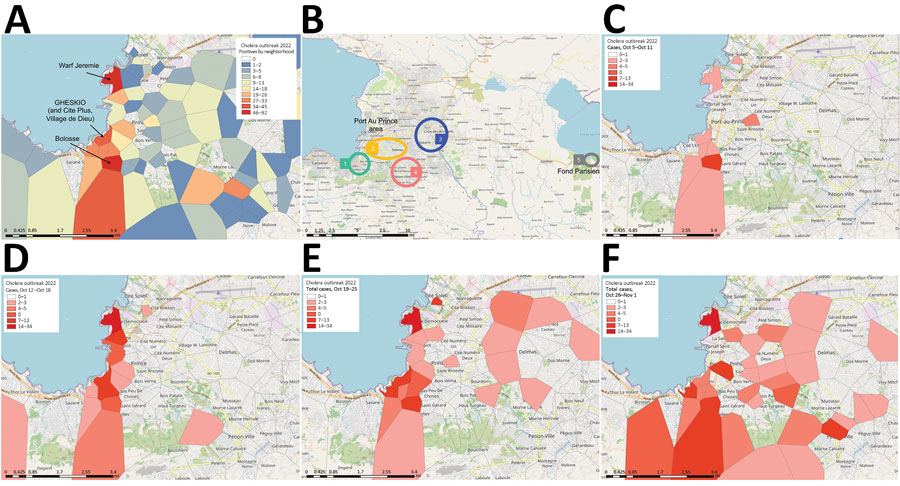Ancestral Origin and Dissemination Dynamics of Reemerging Toxigenic Vibrio cholerae, Haiti
Carla N. Mavian, Massimiliano S. Tagliamonte, Meer T. Alam, S. Nazmus Sakib, Melanie N. Cash, Monika Moir, Juan Perez Jimenez, Alberto Riva, Eric J. Nelson, Emilie T. Cato, Jayakrishnan Ajayakumar, Rigan Louis, Andrew Curtis, V. Madsen Beau De Rochars, Vanessa Rouzier, Jean William Pape, Tulio de Oliveira, J. Glenn Morris
1
, Marco Salemi
1, and Afsar Ali
1
Author affiliations: University of Florida, Gainesville, Florida, USA (C.N. Mavian, M.S. Tagliamonte, M.T. Alam, S.N. Sakib, M.N. Cash, J.P. Jimenez, A. Riva, E.J. Nelson, E.T. Cato, R. Louis, V.M. Beau De Rochars, J.G. Morris Jr., M. Salemi, A. Ali); Stellenbosch University, Stellenbosch, South Africa (M. Moir, T. de Oliveira); Case Western Reserve University School of Medicine, Cleveland, Ohio, USA (J. Ajayakumar, A. Curtis); Les Centres GHESKIO, Port-au-Prince, Haiti (V. Rouzier, J.W. Pape); Weill Cornell Medical College, New York, New York, USA (V. Rouzier, J.W. Pape); University of KwaZulu-Natal, Durban, South Africa (T. de Oliveira); Centre for the AIDS Programme of Research in South Africa (CAPRISA), Durban, South Africa (T. de Oliveira); University of Washington, Seattle, Washington, USA (T. de Oliveira)
Main Article
Figure 2

Figure 2. Temporal-spatial data of 2022 cholera cases in a study of ancestral origin and dissemination dynamic of reemerging toxigenic Vibrio cholerae, Haiti. Data were reported by GHESKIO CTC. A) Cumulative number of patients per Port-au-Prince neighborhood seen at the GHESKIO CTC during October–December 2022. B) Location of Fond Parisien site (no. 5 in gray circle) in relation to phylogeographic case groupings in Port-au-Prince neighborhoods: 1, GHESKIO area; 2, central eastern; 3, far eastern; 4, greater Pétion-Ville. C–F) Temporal and spatial distribution of the reported cholera cases by week: October 5–11 (C); October 12–18 (D); October 19–25 (E); October 26–November 1 (F). Maps created by using OpenStreetMap (https://www.openstreetmap.org). CTC, cholera treatment center; GHESKIO, Groupe Haitien d’Étude du Sarcome de Kaposi et des infections Opportunistes.
Main Article
Page created: August 05, 2023
Page updated: September 20, 2023
Page reviewed: September 20, 2023
The conclusions, findings, and opinions expressed by authors contributing to this journal do not necessarily reflect the official position of the U.S. Department of Health and Human Services, the Public Health Service, the Centers for Disease Control and Prevention, or the authors' affiliated institutions. Use of trade names is for identification only and does not imply endorsement by any of the groups named above.
